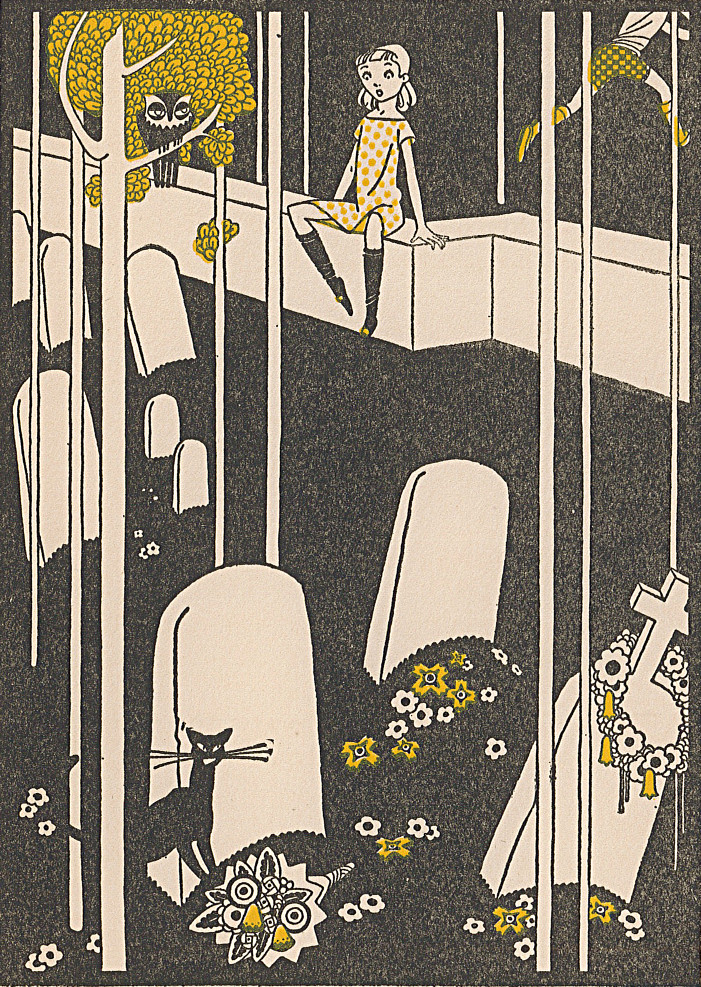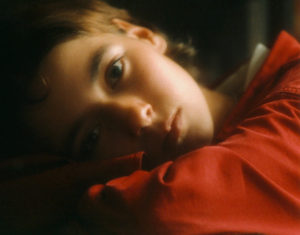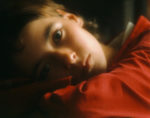
In 1926, at age 13, Nathalia Crane published her third collection of poetry, The Singing Crow and Other Poems. The title comes from a long poem about a crow that, after having its beak torn by an arrow, becomes a wonderful singer; she returns to that topic in the first poem of the collection’s epilogue, “A singer gone.” The book got some success, and she was then dubbed “The Brooklyn Bard” (see Jessica Amanda Salmonson, “Girl Writers: Nathalia Crane, Vivienne Dayrell, & Daisy Ashford,” The Weird Review). There are several very short poems, in particular “The Colors” is often quoted:
The Colors
by Nathalia Crane
You cannot choose your battlefield,
The gods do that for you,
But you can plant a standard
Where a standard never flew.
In this book one witnesses her increasing tendency, started in her second collection Lava Lane, and Other Poems (1925), and completed in her fourth book of verses Venus Invisible, and Other Poems (1928), to put together various sophisticated words, often unrelated, into rhymes. However there is still one poem retaining the humour and vigorous style of her early writings.
A girl goes to a graveyard, intent on raising ghosts. Her contradictor is a red-haired boy, and maybe he is Roger Jones, the janitor’s boy with whom she was in love when she wrote her first collection of verses. She tells him at length about “the things unseen but true.” The appearance of a bat and the screams of two cats make the boy flee, while the girl has “won the secret of raising a ghost,” which is to “sit on a graveyard wall, and talk of the things you never have seen.”
SPOOKS
by Nathalia Crane
OH, I went down to Framingham
To sit on a graveyard wall;
“If there be spooks,” I said to myself,
“I shall see them, one and all.”
I hugged the knee to still the heart,
My gaze on a tomb ‘neath a tree.
Down in the village the clock struck nine
But never a ghost did I see.
A boy passed by and his hair was red,
He paused by a sunken mound.
“How goes it with all the ghosts,” said he,
“Have you heard any walking around?”
Now the taunt was the sign of a boy’s disdain
For the study I did pursue.
So I took the hour to teach that lad
Of the things unseen but true.
I talked of howlet, banshee, ghoul
The gristly and the lean,
I sat on that graveyard wall and told
Of the things I had never seen.
And suddenly a bat swung by
Two cats began to bawl,
And that red-haired boy walked off in haste
When I needed him most of all.
I lost a slipper as I fled—
I bumped against a post,
But nevertheless I knew I’d won
The secret of raising a ghost.
And the method is this—at least for a miss,
You must sit on a graveyard wall,
And talk of the things you never have seen
And you’ll see them, one and all.
Source of the poems and the illustration: Nathalia Crane, The Singing Crow and Other Poems. Illustrated by Mac Harshberger. Albert & Charles Boni, New York (1926).
Previously published on Agapeta, 2018/01/14.

